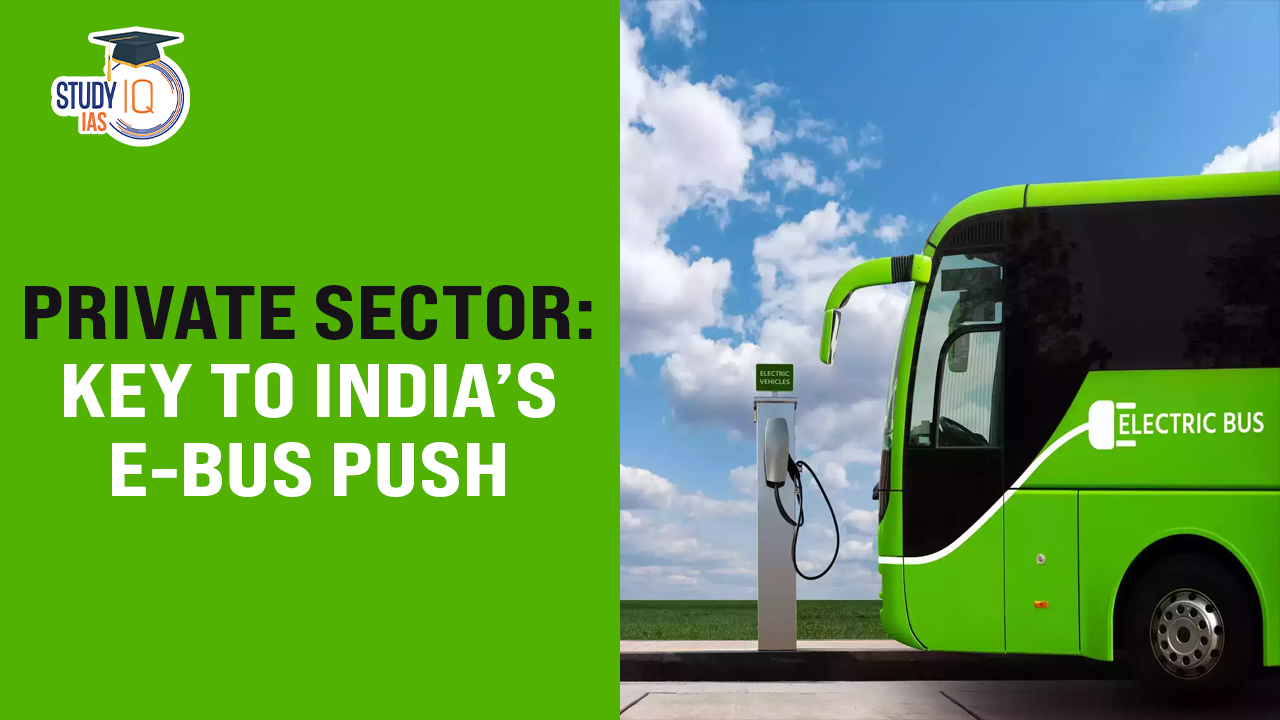The Union Cabinet recently approved the PM Electric Drive Revolution in Innovative Vehicle Enhancement (PM E-DRIVE) scheme to accelerate the transition to electric vehicles (EVs), especially electric buses. However, private buses (93%) are excluded, which may limit the scale of electric mobility.
Hurdles and Solutions for Electric Bus Adoption in India’s Private Sector
Hurdles
- Exclusion from Subsidies: Private bus operators, who own 93% of buses in India, are not included in major national schemes like the PM E-DRIVE and FAME, which primarily support public sector buses.
- Financing Barriers: High upfront costs, perceived low resale value of electric buses, and uncertainties over battery life make financing difficult for private operators.
- High-interest rates and loan instalments reduce financial viability, especially during the loan period.
- Limited Charging Infrastructure: Existing FAME-funded charging facilities are restricted to public sector depots.
- Private operators, especially those with small fleets, face high land and infrastructure costs, making charging facilities economically impractical.
- Additionally, power supply interruptions and inadequate grid capacity add to the challenge.
- Operational Viability: High land lease rental costs and the significant space required for charging stations (70 to 120 sq.m.) increase the economic burden for private operators, limiting their ability to set up infrastructure.
Solutions
- Financing Support:
- Interest Subsidies and Longer Loan Tenures: Introducing favourable financing options can reduce upfront costs.
- Credit Guarantees: Providing credit guarantees through government banks or financial institutions can lower investment risks for financiers and make loans more accessible.
- Shared Charging Infrastructure:
- Public and Intercity Charging Facilities: Develop shared public charging infrastructure within cities and along major intercity corridors to make charging more accessible and economical.
- State Government Involvement: States could lead in establishing charging facilities by using PM E-DRIVE subsidies to develop 1,800 bus chargers.
- Tenders for shared charging stations can be structured on a DBOT (design-build-operate-transfer) basis, ensuring minimum energy usage guarantees for economic viability.
- Battery-as-a-Service (BaaS) Model:
- Battery Ownership Separation: The BaaS model, seen in countries like China and Kenya, can reduce upfront costs by separating battery ownership from vehicle ownership, thus making electric buses more financially accessible for private operators.
- Battery Swapping and Leasing Models: Usage-linked leasing, like India’s Vertelo platform by Macquarie, allows operators to pay based on use, reducing both financial and operational risks


 World Population Day 2025, Themes, Histo...
World Population Day 2025, Themes, Histo...
 What are Polycyclic Aromatic Hydrocarbon...
What are Polycyclic Aromatic Hydrocarbon...
 Marlin Fish: Species, Features, Appearan...
Marlin Fish: Species, Features, Appearan...





















